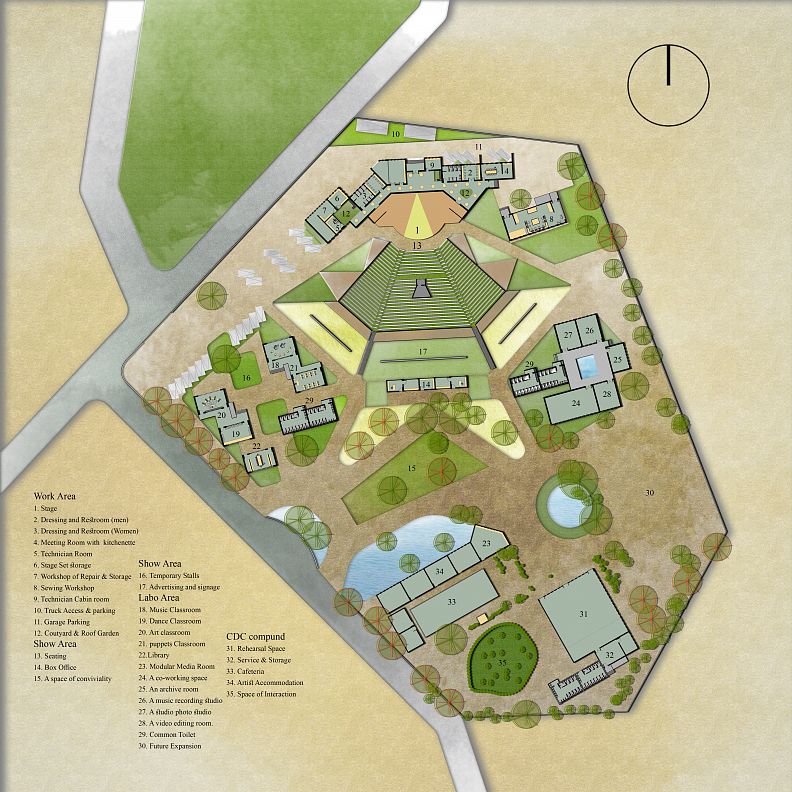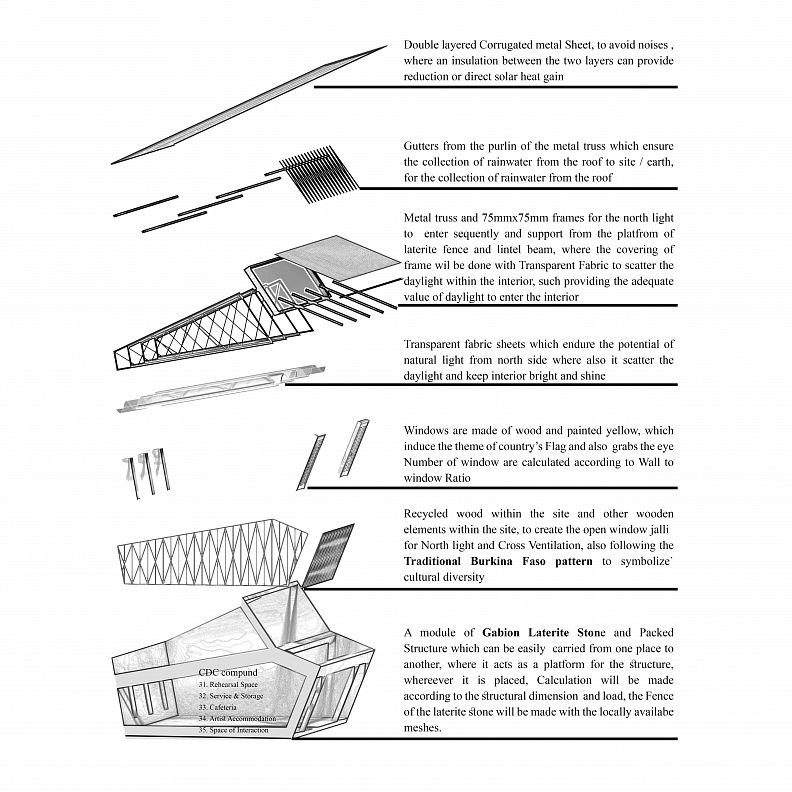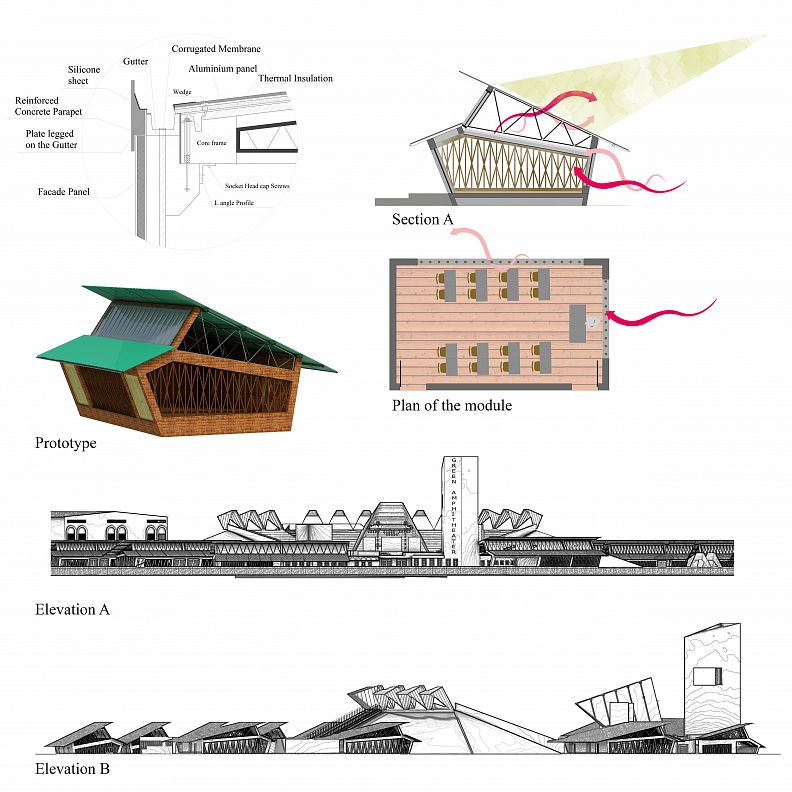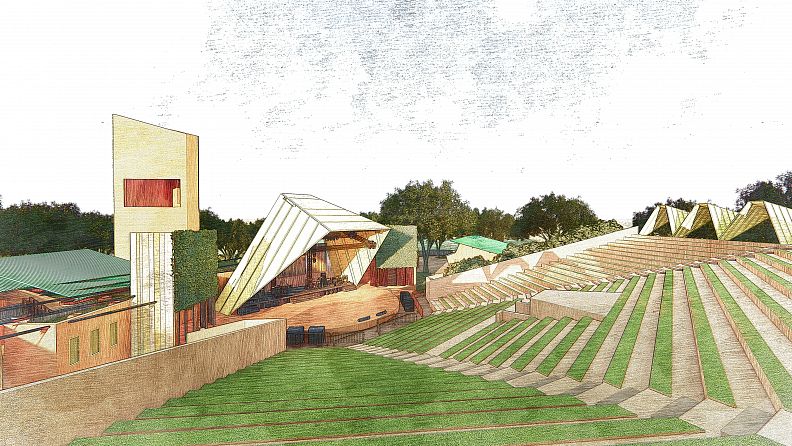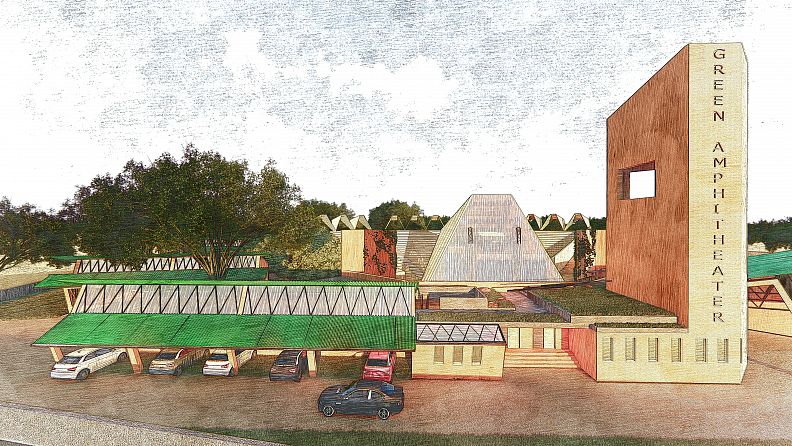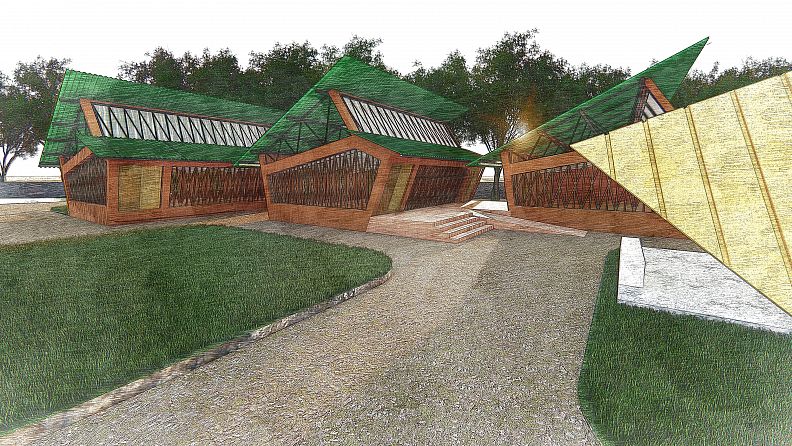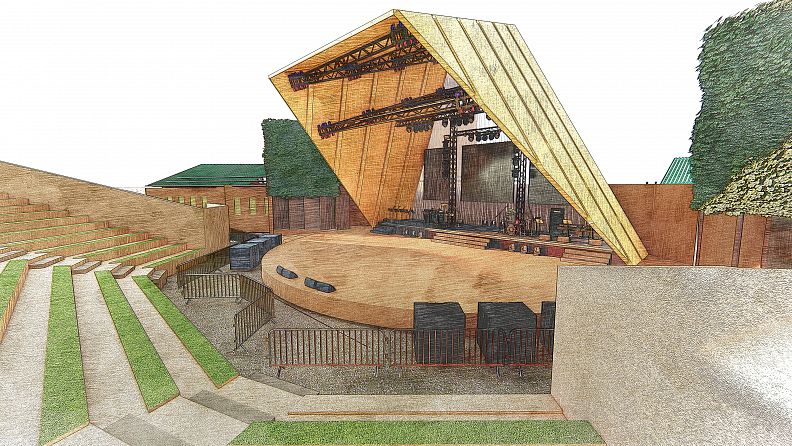The Green Amphitheater, Burkina Faso, West Africa

Project idea
The Green Amphitheater, From the name its describes its Sustainability towards Future. The idea of the Project is to enhance the right combination of growth potential, self - sustainability and broad impact.
1. Renewable Energy
2.Gardening, landscape & Biodiversity
3. Low Carbon Transport
4.Clean Water & Reuse Water
5.Recycling material & Using Locally Available Materials
Solar orientation of the Building in relation to Seasonal variation in the Sun's path as well as prevailing wind patterns.Well, the orientation of the building and materials usage will be Symbiotic to its ecosystem.
Color of the Building will be inspired from Para - African colors (Red, yellow & green) which is themed as Wall, Joinery & Roof .
To maintain the amphitheater’s historic character, mature trees were protected, additional trees were planted, and additional built space was minimized.
Adding Cultural and traditional values of the building or a region through Form and pattern within the diverse environment. The history and architecture of Burkina Faso is tied to its landscape. As a landlocked country in western Africa, it occupies an extensive plateau with grassy savannas and sparse forests. More than two-thirds of the people live in rural villages, and as such, the country’s modern architecture is the product of ingenuity born from reimagining traditional building materials and techniques.
Project description
"If we build with local materials we will have a better future, because we will use the resources we have,"
The main objective is to link art and culture with awareness in various areas, such as informal education, respect for the environment, sustainability of urban life, social equality and emancipation, democracy, peace and stability. The culture is understood as an essential element of dialogue and mutual understanding.
The building´s design emphasizes the positive approach towards environment, towards sustainable, innovative and respectful architecture. Its vertical form and the choice of local material called Laterite stone (compressed earth bricks) guaranteed no need for air conditioning. The future installation of a solar system will enhance functionality, independence and resilience on a daily basis.
The Module of the building can be assemble and resemble when it is required.Working with corrugated metal and replacing concrete with locally made Gabion Laterite Fence, his projects address the landscape of Burkina Faso and its seasons.
These traditional clay-building techniques were modified and modernized in order to create a more structurally robust construction in the form of bricks. The bricks combine with a corrugated metal roof that reinterprets the traditional metal roofs used in the houses of Burkina Faso.
Technical information
The walls of these modules are made from locally-harvested laterite stone, which, when first extracted from the earth, can be easily cut and shaped into bricks. When the stone is left exposed to the atmosphere above ground, it begins to harden. The material functions really well as a wall system for the module because of its thermal mass capabilities. This, in combination with the unique wind-catching towers and overhanging roofs, lowers the temperature of the interior spaces & corridor exponentially.
Another major factor that helps to naturally ventilate and illuminate the interiors is a massive transparent Fabric ceiling.The off-white color of the ceiling serves to diffuse and spread around indirect daylight, providing ample illumination during the day while keeping the interior learning space protected from direct solar heat gain.
Wrapping around these module like a transparent fabric is a system of wooden screens. This secondary façade is made from a local fast-growing wood and acts as a shading element for the spaces immediately surrounding the educational space. The screens not only function to protect the earthen classrooms from corroding dust and winds, they also help to create a series of secondary informal gathering spaces .
Co-authors
Ar. Muralidaran, Ar. Mugunthan

